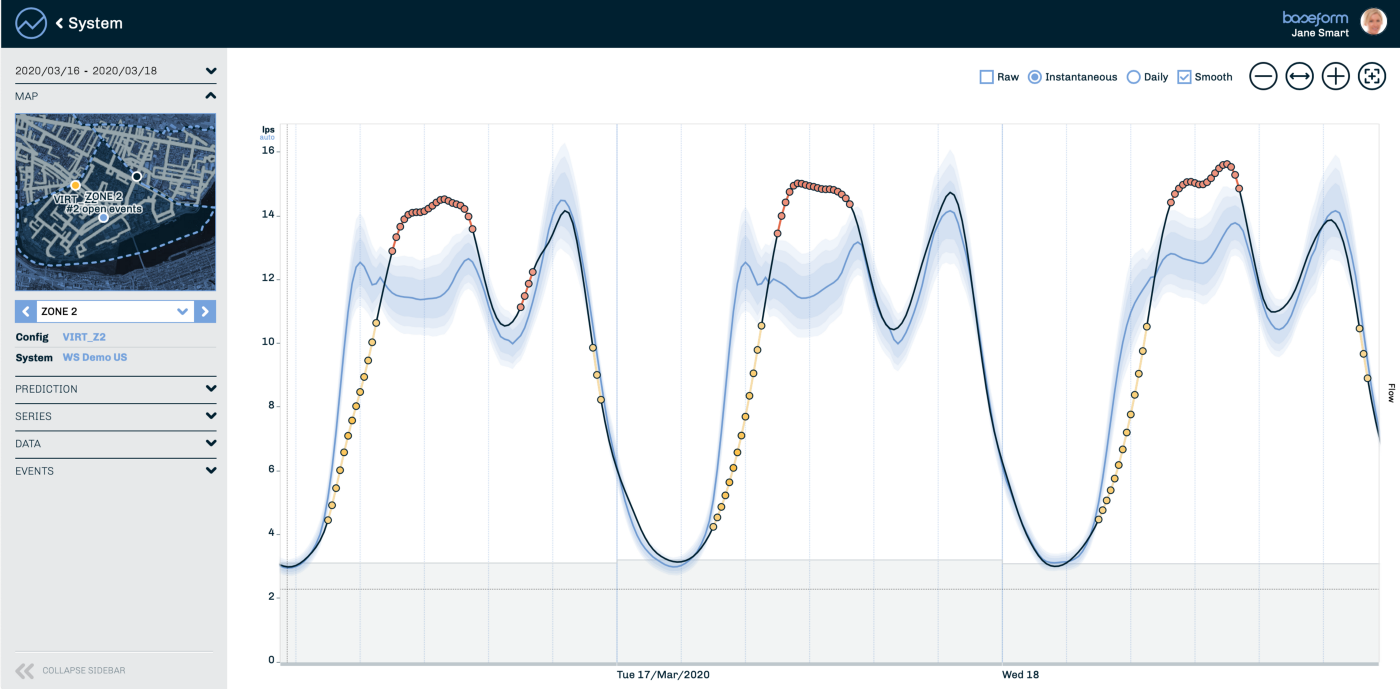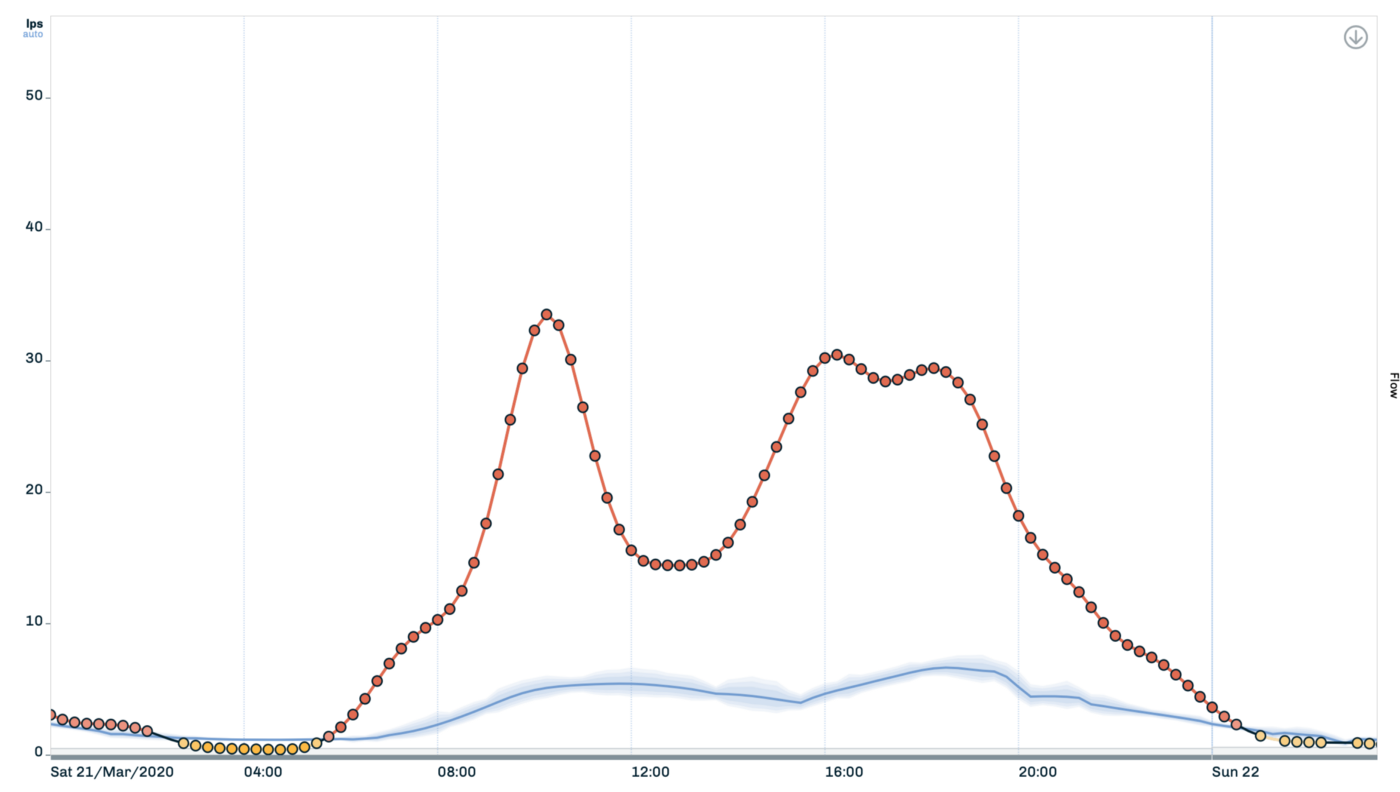Water: responding to COVID-19
Combating the spread of COVID-19 requires that communities, citizens, essential industries, healthcare and critical facilities have continuous access to water and sanitation. The widespread outbreak of the pandemic places great stress not only on the health system’s response but also on the ability to continue to provide water services for an unforeseen period of time.
As soon as we realized that the crisis was having a significant effect on utilities, Baseform has been helping its clients respond and adapt. Realizing how we may be in a privileged position to assist, we have recently decided to take a more proactive role by offering our essential software at no cost to a wider audience. We have started with Spanish utilities as that country was being hit hard by the epidemic, and will be expanding from there as our resources allow.
Baseform software connects to water and wastewater utilities’ data systems and makes that information available on a web platform accessible to all staff on the different departments of the organization. The software also includes analytical and predictive capabilities which aid in understanding and responding to the crisis.
Supporting water and wastewater infrastructure, technicians and field crews to ensure good and consistently applied water, sanitation, and hygiene and waste management practices in the current scenario is a particularly difficult challenge. Here’s how we can help.
1. Detecting water supply events
Water utilities’ staff are overwhelmingly being reassigned to work from home, and field personnel and resources need to be reduced to a bare minimum to protect workers and prevent the spread of the disease. Managing this decreased response capability at a time when failure to supply water would be even more critical is a hard problem of tremendous responsibility, and utilities everywhere are among the unsung heroes that society is relying upon.
Existing monitoring systems, including flow, pressure and other data drive the software’s predictive engines to provide transparency into disruptive events like pipe leaks and breaks that can compromise the service, or unforeseen system response due to the increased demand.

A pipe break being detected by the software. The black/dotted line represents actual flows, coming from existing network sensors; the blue line shows the prediction, based on historical data. Early warnings and event handling workflows are available to help fast reaction, share response information and prioritizing when and where to deploy field crews.

Mapping the infrastructure and critical facilities allowing for an overview of the living system, available from any device.
2. Monitoring consumption changes
Water use directly reflects the disruptive impact of closing schools, businesses and stay-at-home policies. Water and wastewater networks are designed and operated to deliver a service for the particular way each urban community behaves, from peri urban to inner city, and from residential to tertiary.
Demand habits have quickly changed as people stay at home and consume locally during the day. Water systems in residential areas are seeing sharp increases in diurnal and peak demands, placing stress on production/acquisition, storage and pumping capacity; while office and commercial districts slowed down, increasing water travel times and the potential for water quality issues.

Typical impact of the change in one area: wake up/morning flows are delayed, as a consequence of stay-at-home, and a sustained peak in consumption throughout the middle of the day. Diurnal volumes are sharply increased.
Through the city, different areas respond in different ways:

Industrial area — reduced consumption, longer travel times, more stagnation

Residential area with a significant increase — is pumping, storage or production up to the task?
Baseform’s offer to affected communities is a streamlined and focused version of the full service we deliver to our clients across the globe. Enrollment hinges on a quick connection to the existing systems — GIS, SCADA and telemetry, starting with manual uploads and then moving to a direct connection to live systems. In our experience, the software is running within 1–2 days and meaningful event and demand prediction results from week one.
As in many organizations, Baseform’s people are all working remotely and dealing with the crisis in the best possible way. We are starting with the most affected country within our direct reach, Spain, and plan on expanding fast.
Utilities can count on Baseform to help out for the duration of the pandemic. The current time frame is for a 3-month period of free services, and we will expand that as needed depending on the evolution in each region’s response to the crisis.
When we are all on the other side of this, utilities who choose to leave Baseform will be able do so at any time retaining all data and results generated, as all our clients.